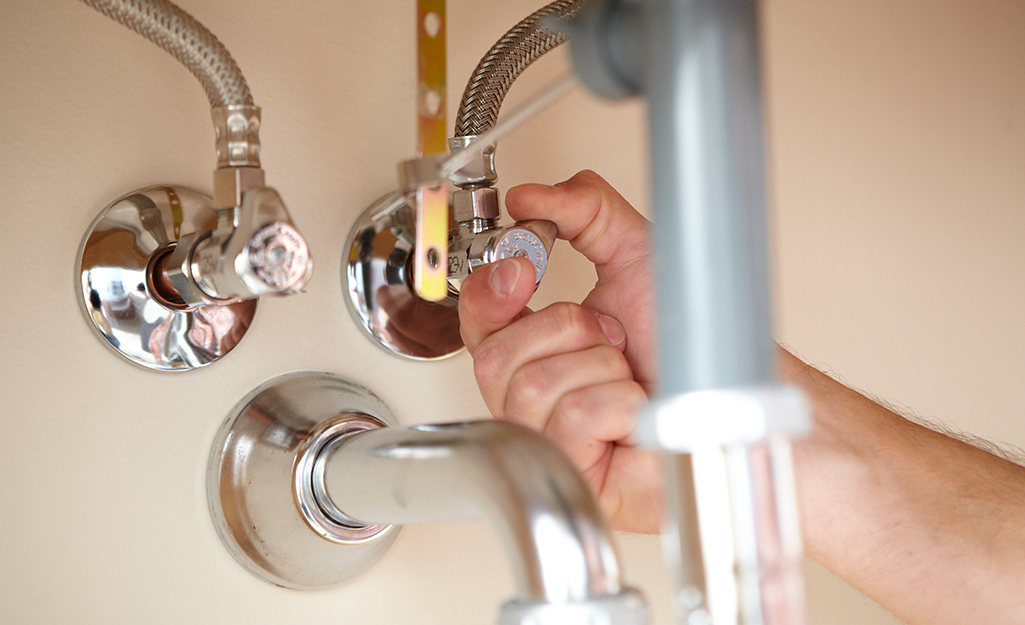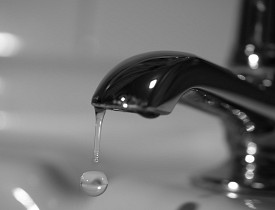What It's Essential to Fix a Faulty Faucet
What It's Essential to Fix a Faulty Faucet
Blog Article
They are making a few great points on How to Fix a Dripping or Leaky Faucet overall in the content down below.

Trickling taps might feel like a small aggravation, but their impact exceeds just the annoyance of the sound. From wasting water to incurring unnecessary financial expenses and health and wellness risks, disregarding a leaking faucet can lead to numerous consequences. In this post, we'll explore why it's essential to resolve this common house concern without delay and efficiently.
Wastefulness of Water
Environmental Influence
Leaking faucets contribute considerably to water wastage. According to the Epa (EPA), a solitary tap trickling at one drip per second can squander greater than 3,000 gallons of water annually. This not only stress water sources but likewise affects ecological communities and wild animals dependent on them.
Step-by-Step Guide to Dealing With a Dripping Tap
Tools Called for
Before trying to take care of a trickling tap, collect the essential tools, including a flexible wrench, screwdrivers, replacement parts (such as washing machines or cartridges), and plumber's tape.
Usual Tap Issues and Their Solutions
Identify the type of faucet and the certain problem creating the drip. Common issues consist of damaged washers, corroded shutoff seats, or damaged O-rings. Describe producer instructions or on-line tutorials for detailed support on fixings.
Financial Prices
Increased Water Costs
Past the environmental influence, trickling faucets can inflate water expenses substantially. The built up wastefulness in time translates right into higher energy expenses, which might have been avoided with timely repairs.
Potential Residential Property Damage
In addition, extended leaking can cause damage to fixtures and surface areas surrounding the tap. Water buildup can create discoloration, corrosion, and even architectural issues if left ignored, resulting in added repair service expenses.
Health and wellness Worries
Mold and Mildew Development
The continuous presence of dampness from a leaking faucet creates an ideal atmosphere for mold and mildew and mildew growth. These fungis not only endanger interior air top quality however additionally pose health and wellness dangers, particularly for people with respiratory system problems or allergies.
Waterborne Conditions
Stationary water in leaking faucets can come to be a breeding place for germs and other microorganisms, raising the risk of waterborne conditions. Pollutants such as Legionella bacteria thrive in stagnant water, possibly bring about severe diseases when consumed or inhaled.
Do it yourself vs. Professional Repair work
Benefits and drawbacks of DIY Fixing
While some may attempt to deal with a leaking tap themselves, DIY fixings feature their own collection of obstacles. Without correct knowledge and tools, do it yourself efforts can exacerbate the concern or lead to incomplete repairs, extending the issue.
Advantages of Employing a Specialist Plumber
Hiring a specialist plumber ensures that the underlying cause of the leaking tap is dealt with effectively. Plumbings have the proficiency and equipment to identify and repair faucet problems efficiently, saving time and minimizing the risk of further damage.
Environmental Duty
Specific Contribution to Preservation
Taking responsibility for fixing leaking faucets aligns with more comprehensive efforts towards water conservation and ecological sustainability. Every individual's actions collectively make a considerable influence on protecting priceless resources.
Lasting Living Practices
By focusing on timely repair work and embracing water-saving practices, individuals add to sustainable living techniques that profit both existing and future generations.
Safety nets
Routine Maintenance Tips
To stop leaking taps, execute routine upkeep such as cleaning aerators, examining for leaks, and changing worn-out components immediately. Additionally, take into consideration setting up water-saving devices or upgrading to much more effective fixtures.
Relevance of Prompt Fixes
Attending to trickling faucets as quickly as they're seen prevents additional water wastage and prospective damages, ultimately saving both water and cash over time.
Influence On Home Worth
Perception of Well-Maintained Home
Preserving a residential or commercial property in good condition, consisting of resolving upkeep problems like trickling faucets, boosts its perceived value and worth among possible buyers or renters.
Influence on Resale Worth
Residences with well-maintained plumbing fixtures, including taps, command higher resale values in the property market. Attending to dripping faucets can contribute to a positive impression during property assessments and negotiations.
Verdict
Dealing with a leaking tap goes beyond simple benefit; it's an important action toward saving water, reducing monetary prices, and protecting wellness and residential property. Whether with do it yourself repairs or specialist support, acting to fix trickling faucets is a tiny yet impactful way to advertise responsible stewardship of sources and contribute to a much healthier, much more lasting future.
How to Fix a Leaky Faucet: Step-by-Step Repair Guide
A leaky faucet may seem like a simple annoyance, but if it's not fixed promptly, that leak could cost hundreds to potentially thousands. From water damage to mold, mildew, and high water bills, even a tiny leak can be catastrophic if left unattended. Damage like this can even affect the overall value of your home, so it's important to take the right approach for leaky faucet repair. You may need the help of a plumber in some cases, but we've got a few tips you can try on how to fix a leaky faucet before calling the pros.
Four Faucet Types
When you're learning how to fix a leaky faucet, the first step is knowing what kind of faucet you're working with! There are four common types.
Cartridge Faucets
Cartridge faucets come in one- or two-handled varieties. In one-handled cartridge faucets, hot and cold water combines in a single cartridge. In the two-handled versions, hot and cold water are controlled separately and mixed in the faucet.
Ball Faucets
Ball faucets have a single lever you push up and down to adjust the pressure and rotate to change the temperature. A slotted metal ball controls the amount of water allowed into the spout.
Compression Washer Faucets
They're the oldest type of faucet, but they're still used in many homes — especially older ones. Compression faucets have two separate handles that, when turned, raise or lower the washer that seals a water valve. This valve stops water from flowing through the faucet when it is turned off.
Disc Faucets
Disc faucets rarely need to be repaired due to their maintenance-free design. The water flow is controlled by two discs — the upper one raises and lowers against a fixed lower disc, creating a watertight seal. If your disc faucet starts leaking, you may need to replace the seals or clean residue buildup from the inlets.
Fixing a Leaky Faucet
Step 1: Turn Off the Water
Whether you're learning how to fix a leaky bathtub faucet or how to fix a leaky kitchen faucet, always turn off the water supply to your working area when you're fixing a leak. The last thing you want is a flood added to your list of things to fix.
Look for the shutoff valves below your sink or around the tub and turn them clockwise to stop the water flow. If your faucet doesn't have shutoff valves, you may need to turn off the water for the whole house. Check to make sure it's off by turning the faucet on. If nothing comes out, you're ready to start the repair.
Step 2: Take Apart the Faucet
How you disassemble your faucet depends on the type of fixture you have. You can use a flathead screwdriver to remove the caps on top of the handle or handles for cartridge and compression faucets. Inside, you should see handle screws. Unscrew these with a screwdriver to remove the handle.
Disc- and ball-style faucets will typically have an inlet screw near the handle, and removing that will reveal the interior of the faucet.
Detach the Valve Stem
For cartridge- and compression-style faucets, you'll see the inner valve stem or cartridge once you remove the faucet handles. If you have a compression faucet, unscrew the brass valve stem. If you have a cartridge faucet, pull out the cartridge. If your cartridge has been in place for a while, it may require some tools or extra force to remove it due to mineral deposits.
Examine and Replace Parts
Once you've removed the parts, check them out to confirm what needs to be replaced. You may see corroded rubber washers, O-rings, stems, or cartridges. On a ball-style faucet, check the seats and springs for damage.
If you need to repair a leaky disc faucet, check the inlet and seals on the lower disc.
Once you determine what parts must be replaced, visit your local hardware store. Bring the damaged parts with you to ensure you can purchase the correct components to replace them.
Clean Valves and Faucet Cavity
If you've removed a stem or cartridge, you may notice mineral buildup in the faucet's threads. Use white vinegar to clean the valve seat by soaking it for a few minutes, then scrub it away with a soft toothbrush and rinse with warm water. You can also clean the interior of the faucet in the same way.
Reassemble the Faucet
Once your faucet is cleaned and the required parts have been replaced, it's time to reassemble it. Put the pieces back together and slowly turn the water supply back on. Doing this slowly is crucial because too much initial water pressure can damage the new hardware you've just installed.
https://homewarranty.firstam.com/blog/how-to-fix-leaky-faucet

I am very excited about Leaky Faucets: Why They Happen & What to Do About Them and I hope you liked our blog entry. Enjoyed our posting? Please quickly share it. Help someone else locate it. Bless you for your time. Return soon.
Report this page